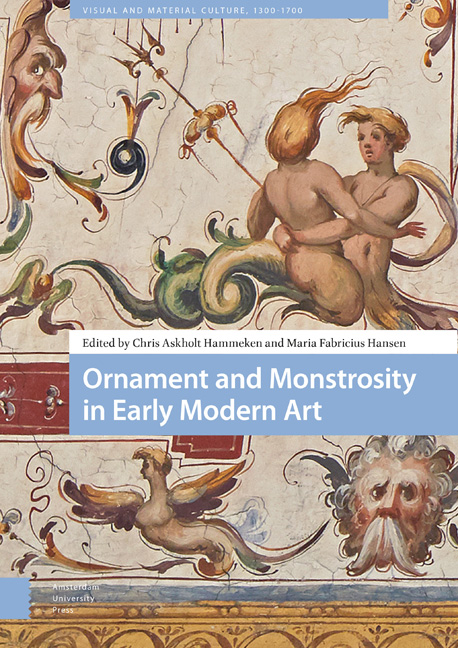3 - Outside-In: The Intrusion of Ornament into Sacred Narrative
Published online by Cambridge University Press: 21 November 2020
Summary
Abstract
In a little-known print series, painter-designer Marcus Gheeraerts radically upends the conventional distinction between inside and outside, narrative and ornament, and sacred and profane. His fourteen engravings depicting Christ's Passion (c. 1580) apply the formal vocabulary and syntax of the grotesque in order to frame each print, provide a structural logic across the series, hierarchize narrative elements, register emotional tenor, and challenge conceptual divisions at play in the prints. The title page at once emphasizes the devotional subject matter and the engravings’ utility for designers working in a variety of media. The series raises questions about the nature of sacred images, the role of the grotesque, and the future of artistic enterprise in Antwerp, which had been traumatized by recent iconoclasms.
Keywords: Beeldenstorm, narrative art, ornament, frame, Netherlandish grotesque, decorum
Sometime around 1580, the reform-minded artist Marcus Gheeraerts designed a remarkable yet little-known series of engravings depicting Christ's Passion, framed and structured by an elaborate system of grotesque ornament. The series, the Passio Verbigenae, was published and perhaps also engraved by Jan Sadeler. It consists of thirteen prints and a title page, the latter featuring a six-line Latin text by the Antwerp physician and poet Hugo Favolius (Ills. 3.1–3.14). Architectural fragments, scroll- and strapwork, animal and vegetal elements, atmospheric effects, and supernatural motifs entwine and combine to envelop and order the Passion scenes. Critically, these prolific forms not only frame the biblical episodes from without but also extend themselves into and across the narrative field. This incursion enables the ornament to perform a variety of functions: it metamorphoses to become the setting; it organizes and hierarchizes episodes and symbolic elements; and it registers the arc and emotional tenor of the narrative. Most surprisingly, it even extrudes the bodies of protagonists who participate in the story, dehumanizing biblical figures by transmuting them into hybrid beings, half man, half ornament. These novel uses of the grotesque are, to some extent, logical extensions of Gheeraerts's ongoing experiments in ornament design; they also aggressively underscore the status of the image as an artifice of the imagination and hand.By radically upending conventional distinctions between inside and outside – between narrative and ornament, sacred and profane – the series gives visual form to tensions surrounding the function and status of images in post-iconoclastic Antwerp.
- Type
- Chapter
- Information
- Ornament and Monstrosity in Early Modern Art , pp. 95 - 132Publisher: Amsterdam University PressPrint publication year: 2019



